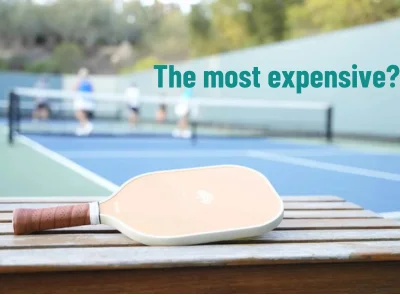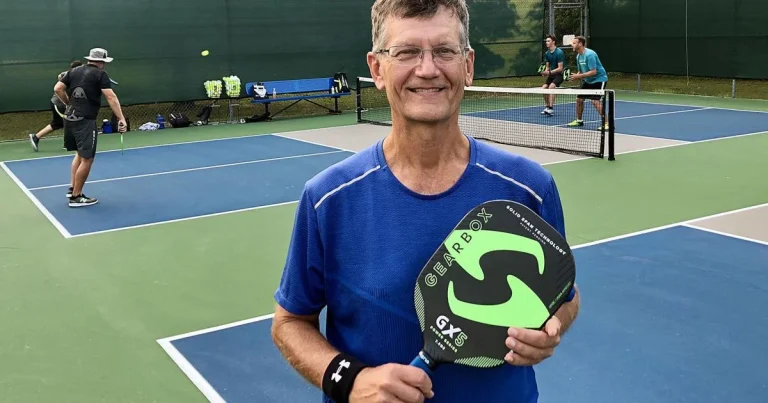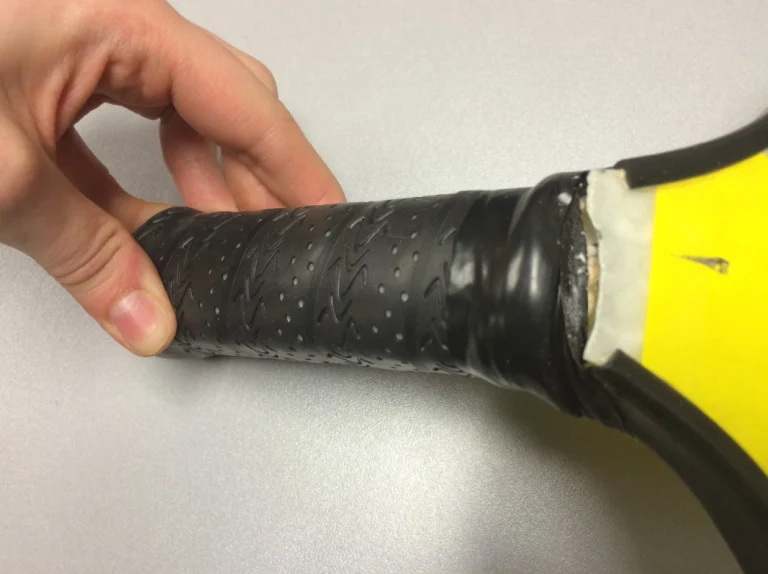Pickleball is rapidly gaining popularity, not only as a trending sport but also as a hybrid game that blends the best of tennis and badminton, offering fun and fitness for people of all ages.
If you are new to pickleball or curious about how to get started, this article is crafted just for you. We have created this pickleball guide to serve as a reliable resource for beginners, ensuring you have a solid foundation to enter the world of pickleball.
Backed by comprehensive research, including reviews of various articles and trusted sources like USA Pickleball organization, this guide provides all the essential information you need to start with confidence.
Here are key aspects that you can acquire:
- Basic Rules: Single vs double play, two-bounce rule, non-volley zone, serving rule
- How to Play: How to start, scoring, faults
- Essential Techniques: Serve, forehand and backhand, dink shot, volley
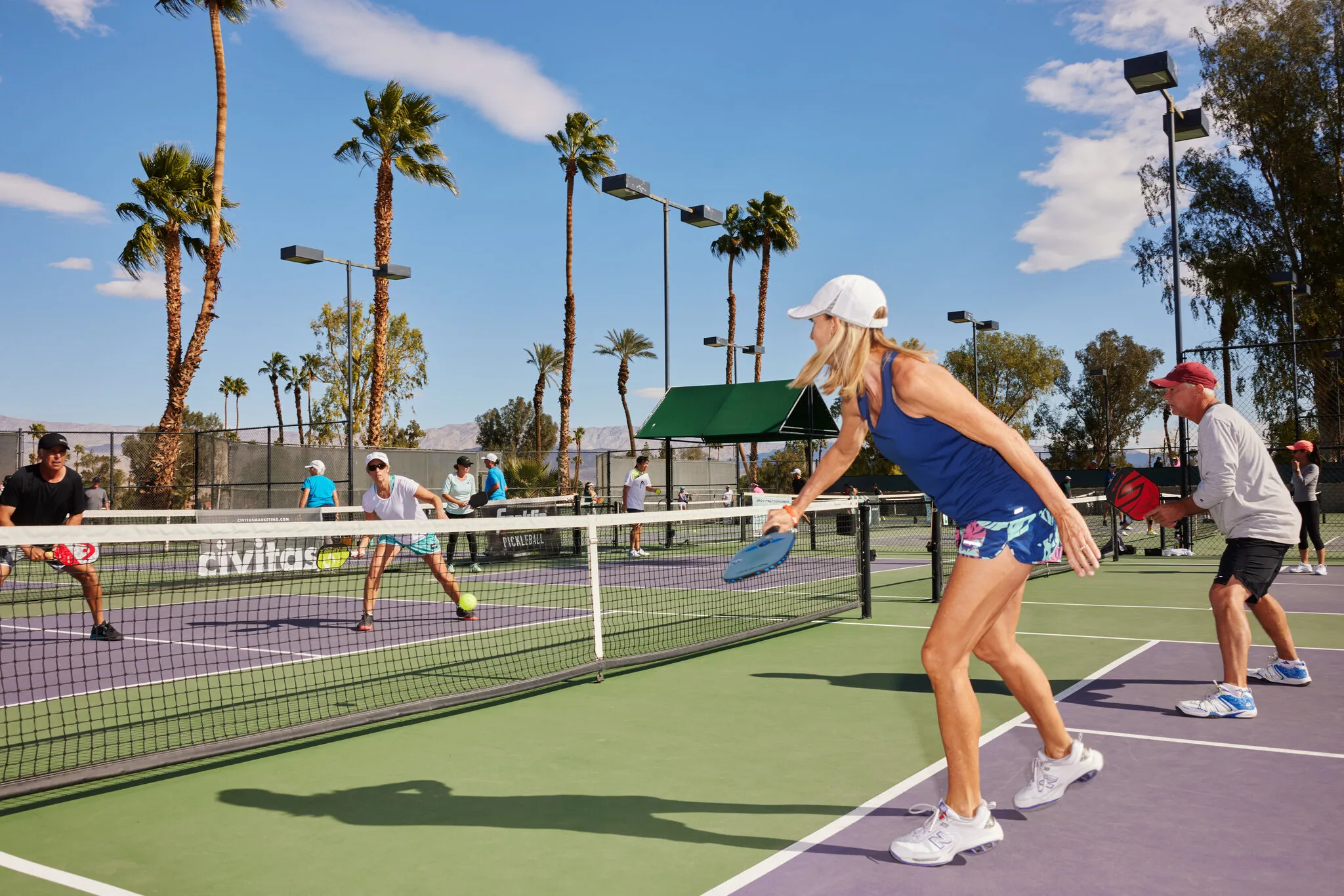
Basic Rules And Understanding
According to the USA Pickleball organization, the following basic rules will help you become familiar with the game from the start with ease.
Singles Vs Doubles Play
Pickleball is played in either Single or Double Play, with doubles being the more popular format. While both formats use the same court size and follow the basic rules, there are some differences to consider.
Singles play: One player competes on each side of the court, responsible for covering the entire court. The server alternates between the left and right service courts after each point.
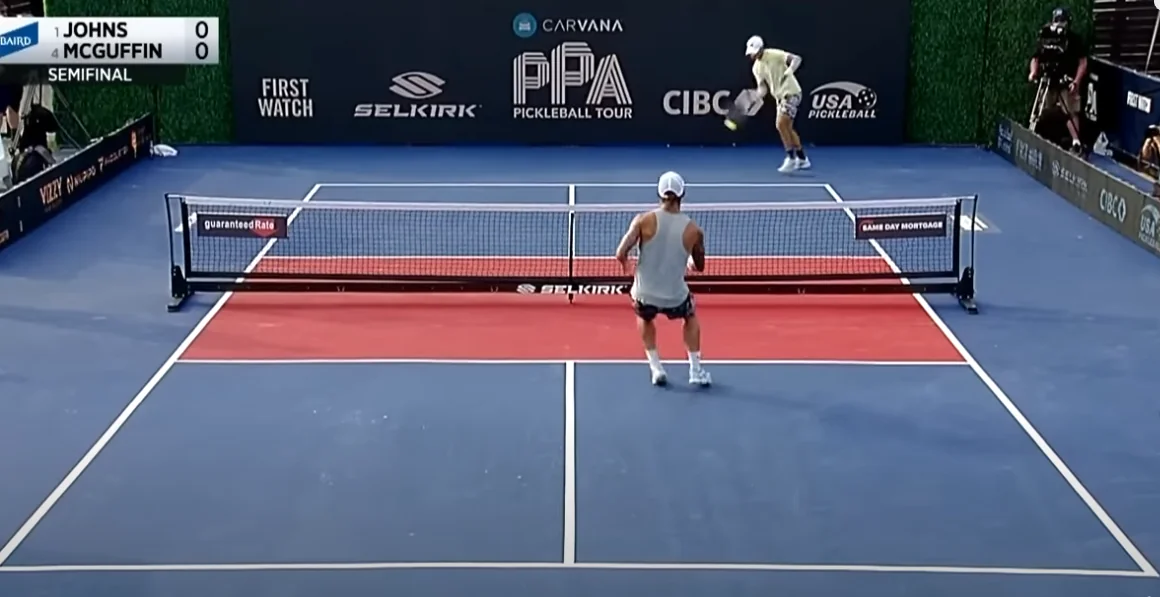
Doubles Play: Doubles involve two players on each side, working together to cover the court. Typically, each player manages one half of the court. When serving, each player on the serving team serves until a fault occurs, after which the serve passes to the opposing team. The service sequence rotates after both players on a team have served.

Indeed, the biggest difference between singles and doubles pickleball is the serving sequence and scoring.
- In singles, the server has only one serve per turn and alternates sides until a fault occurs, announcing the 2-number score as “server’s score – opponent’s score.”
- In doubles, each player serves consecutively until both players on the team have faulted. A set of three numbers“server’s score – opponent’s score – server’s turn” is used to track the score in doubles play.
Two-bounce Rule
This rule is unique to pickleball, designed to extend rallies and prevent an unfair serve-and-volley advantage, ensuring fair gameplay.
After the serve, the ball must bounce twice—once on the receiver’s side and once on the server’s side—before either team can volley the ball.
Non-volley Zone
Apart from similar parts of the court layout like tennis (service areas, baselines, a net in the middle), the non-volley zone also known as the “Kitchen” is the critical area on the pickleball court.
This zone extends 7 feet from the net on both courts to prevent players from dominating the game with volleys while standing close to the net.
Players are not allowed to volley the ball while standing in the non-volley zone. If a player attempts a volley and their foot touches the kitchen line or steps into the zone during the volley motion, it is considered a fault. You may only volley the ball after it has bounced in the kitchen, but you must exit the zone before attempting the volley.
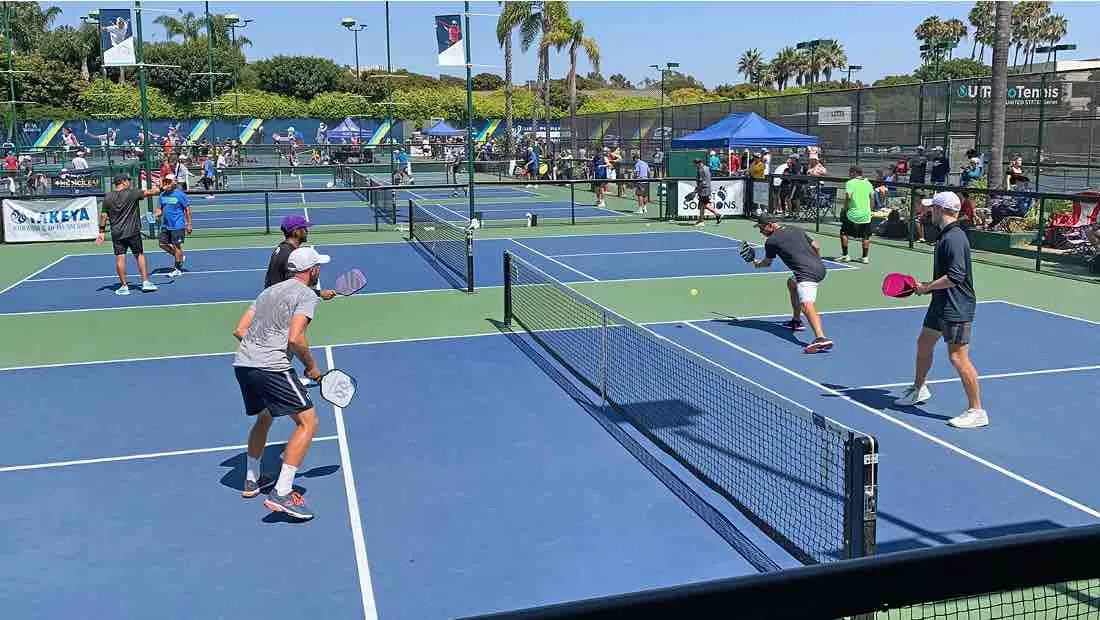
Serving Rule
The serving team has to stand behind the baseline until after a third shot and the receiving team is required to follow the two-bounce rule before volleying the ball. Moreover, the server must clear the net and land within the boundaries of the diagonal service court.
Remember that only one serve attempt ais allowed per server and the serve is made with paddle contact below the waist level.
In pickleball play, it is required to announce score before serving as following format like “3-5-2”.
- First number: score of the serving team
- Second number: score of the receiving team
- Third number: service turns each one into double play (1-first server, 2-second server). For single play, the third number is excluded since there is only one service turn on each side.
One important note: The first score called at the beginning of a new game is ‘0-0-2,’ reflecting that the serving team starts with their second server. This rule ensures fairness in gameplay by balancing the initial advantage of the serving team, who has the first opportunity to score.
How To Play Pickleball For Beginner?
How To Start The Game
Following the USA Pickleball rule, we can use any fair method to determine the starting team, such as local rules or a coin flip. After defining the serving, let’s start the play with the first serve sequence.
Initial Serve Sequence
For Doubles Play
The first server, positioned on the right side of their court, announces the starting score as “0-0-2” and serves diagonally to the opposite service court.
After winning the first point, the serve alternates to the left side of the server’s court. Serves continue to alternate between the left and right sides as long as the serving team wins points. When a fault occurs, the serve passes to the receiving team.
Don’t forget that the serving rule that only one player on the serving team serves before the serve switches to the opponents.
For Singles Play
The serve is made from the right side to the opposite diagonal court with announcing the starting score as “0-0”. The first server continues to serve until a fault is committed, then passes to the opponent.
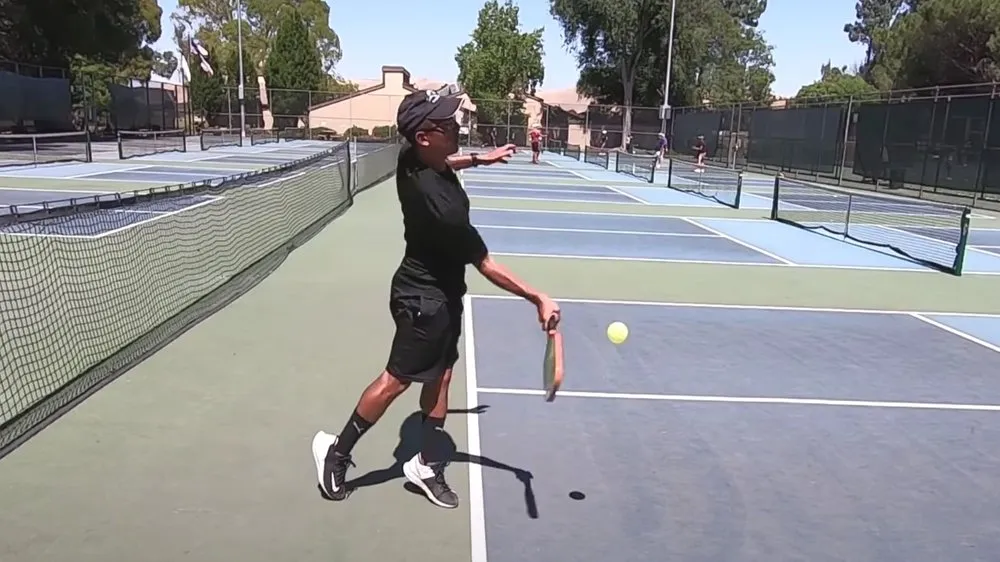
Next Serve Sequence
For Doubles Play
When the receiving team gains the serve, starting with the player on the right side of their court with the same flow like 1st serve. Both players have the opportunity to serve and score points.
Serves alternate between the left and right sides after each successful point until a fault occurs. After a fault by the first server, the second server on the team serves. When the second server faults, the serve switches to the opposing team.
For Singles Play
The play continues until the server commits a fault. When a fault occurs, the opponent gains the serve and follows the same serving rules.
The serve alternates between the right and left sides based on the server’s score: Serve from the right/even court when the score is even and vice versa.
For additional visual references, this resource from the USA Pickleball organization will provide you with more insights on how to play pickleball.
Scoring System
Games are typically played by 11 points and a team must win by at least 2 points. In other words, if the game score is tied at 10-10, the play is required to continue until one team gains a 2-point lead, resulting in a final score like 12-10 and so on.
In addition, remember that only the serving team can score points. All the shots by the serve in the court or on the lines without committing any faults are considered “in”, resulting in a score.
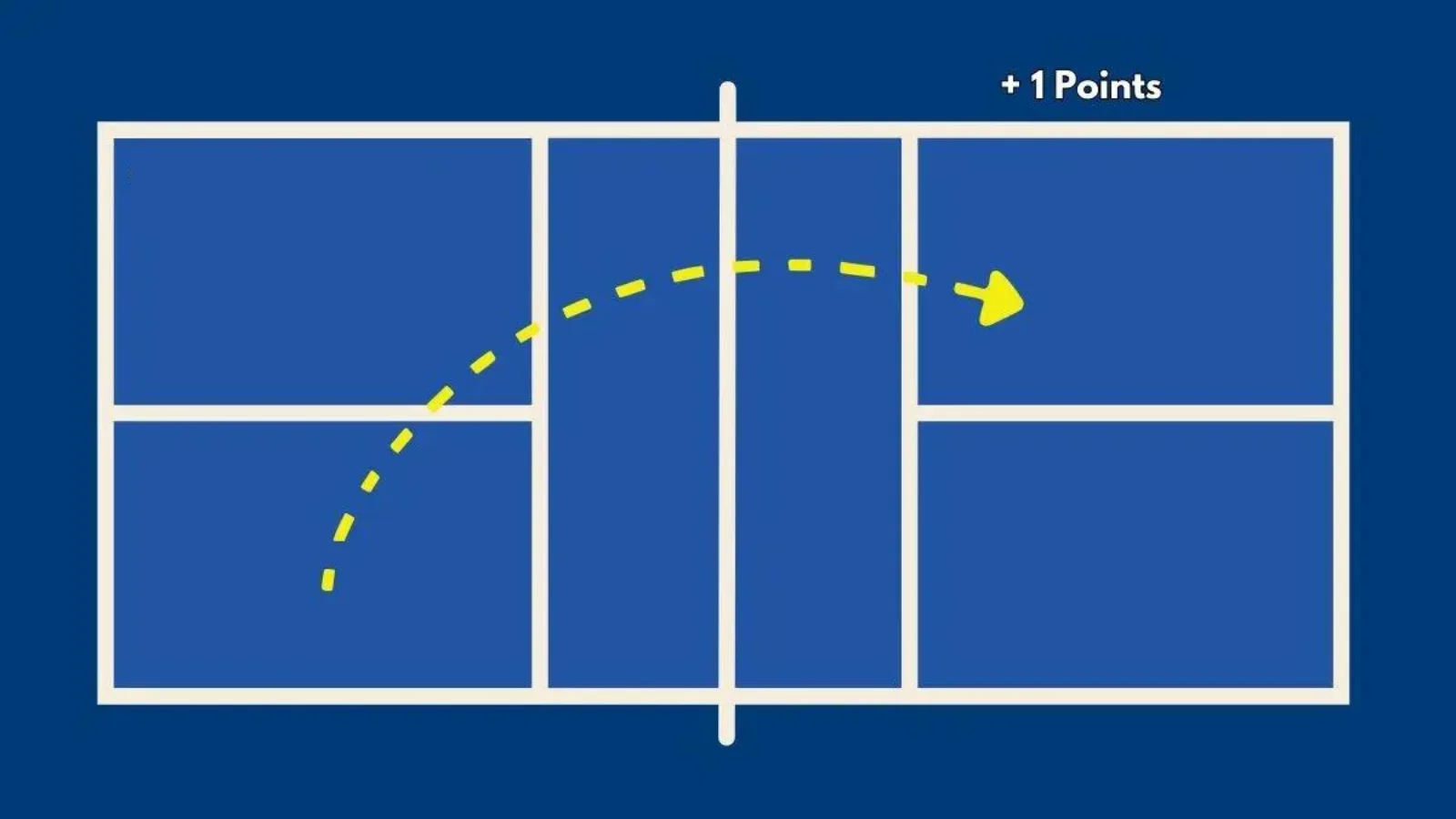
Faults Or Rule Violations
Following are some typical faults to take into consider when playing pickleball, either in single or double play:
- Serving fault: balls hit the net, fail to land in the correct service area or rule violations like the serve is not implemented underhand and below the waist.
- Bounce fault: lacking bouncing ball before hitting back.
- Non-volley zone fault: volleying the ball in the kitchen area or while touching the non-volley zone line.
4 Essential Pickleball Techniques For Beginners
Before immersing yourself in the techniques, it is essential for beginners to become acquainted with pickleball terminology, which is frequently used in the gameplay. Understanding these terms will help you grasp the rules and strategies more effectively. For a comprehensive list of pickleball terms and slang, this article will be a helpful resource for your reference.
Now, let’s explore some essential techniques below!
#1. Serve
The serve is a crucial technique for hitting and directing the ball strategically. There are two main types:
- Underhand Serve: Swing the paddle underhand, contacting the ball below the waist. Focus on accuracy rather than power to deliver a low, short serve aimed at the opponent’s weaker side or the back corner of the court.
- Deep Serve: Similar to the underhand serve but with a deeper hit. Use a full, fluid swing and aim towards the back of the court. This serve pushes your opponent to the baseline and gives you time to get into position.
For a more detailed guide on serving techniques, check out this video.
#2. Forehand and Backhand Groundstrokes
These techniques are essential for returning the ball after it bounces:
- Forehand: Hit with the palm of your hand facing the net, usually for balls coming to your dominant side. Use your whole body and keep the paddle face slightly open to generate the best power.
- Backhand: Hit with the back of your hand facing the net, for balls coming to your non-dominant side. Hold the paddle with both hands for better control.
You may refer to these videos for detailed insights about these two groundstrokes:
The Forehand Drive in 3 Simple Steps by John Cincola Pickleball
Develop backhand groundstroke from PrimeTime Pickleball
#3. Volley
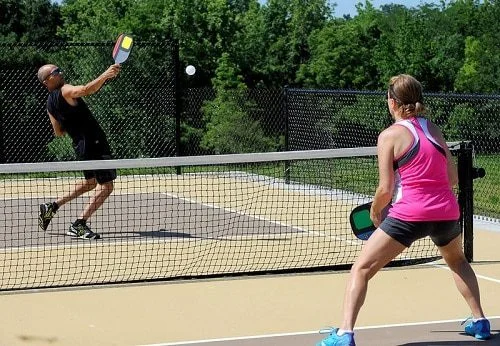
The volley involves hitting the ball out of the air before it bounces, which is particularly useful for fast-paced exchanges at the net.
For a basic overview of the volley technique, this video provides essential steps for beginners.
#4. Dink Shot

The dink shot is a soft, controlled hit designed to redirect the ball into your opponent’s non-volley zone, just over the net. The primary goal of this shot is to force your opponents to move forward, creating opportunities for them to make mistakes or deliver weak returns.
To execute a dink shot effectively, use a gentle touch with the paddle and keep the face slightly open to achieve a low arc. Focus on accuracy, aiming to drop the ball just over the net and into the opponent’s kitchen, rather than hitting it hard. Practicing your touch will help you achieve the right level of softness and control.
For additional tips on successful drinking, kindly refer to this tutorial for better understanding.
In Summary
By immersing yourself in the detailed information provided in this article, you now have a solid understanding of the essential rules, how to start the game, and key techniques. Paddle Pickler will help you make a smooth entry into pickleball gameplay with confidence.
Now that you’ve got the basics down, it’s time to hit the court and enjoy the game!
References:
- USA Pickleball. 2024. Rules summary. USA Pickleball. https://usapickleball.org/what-is-pickleball/official-rules/rules-summary/. Accessed on August 28, 2024.
- LTA. 2024. How to get started playing pickleball. LTA. https://www.lta.org.uk/play/ways-to-play/pickleball/how-to-get-started-playing-pickleball/. Accessed on August 28, 2024.


